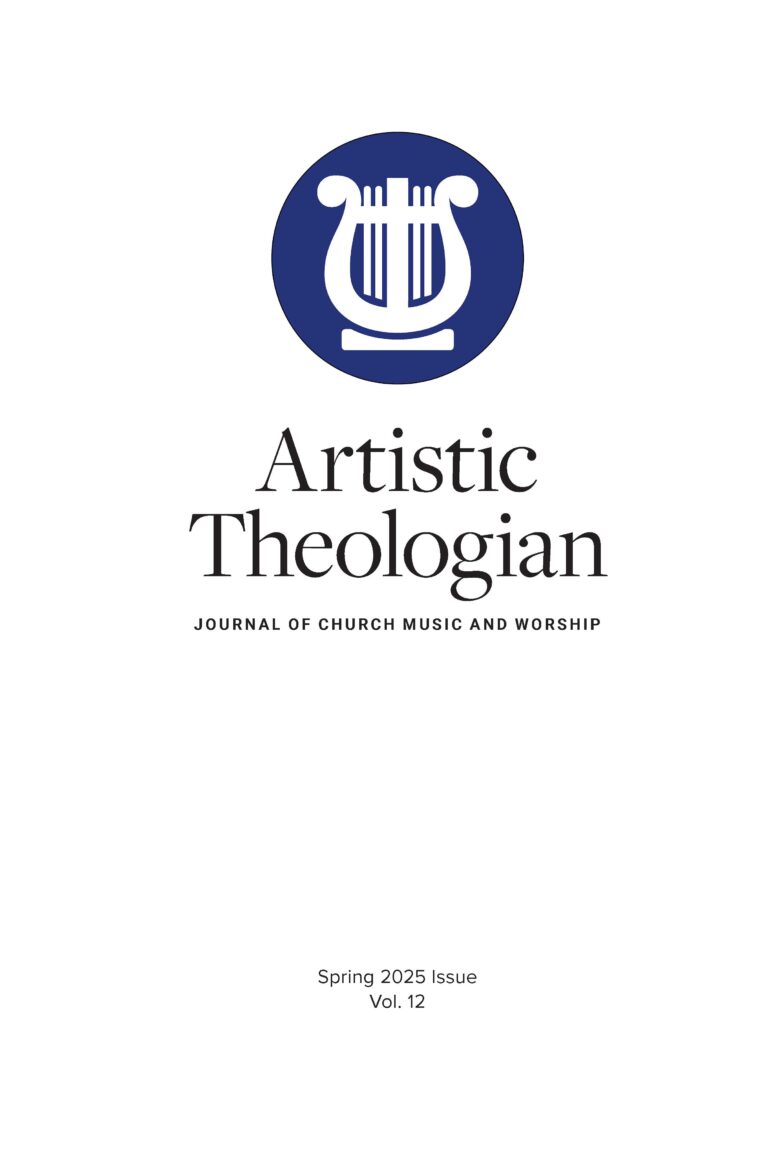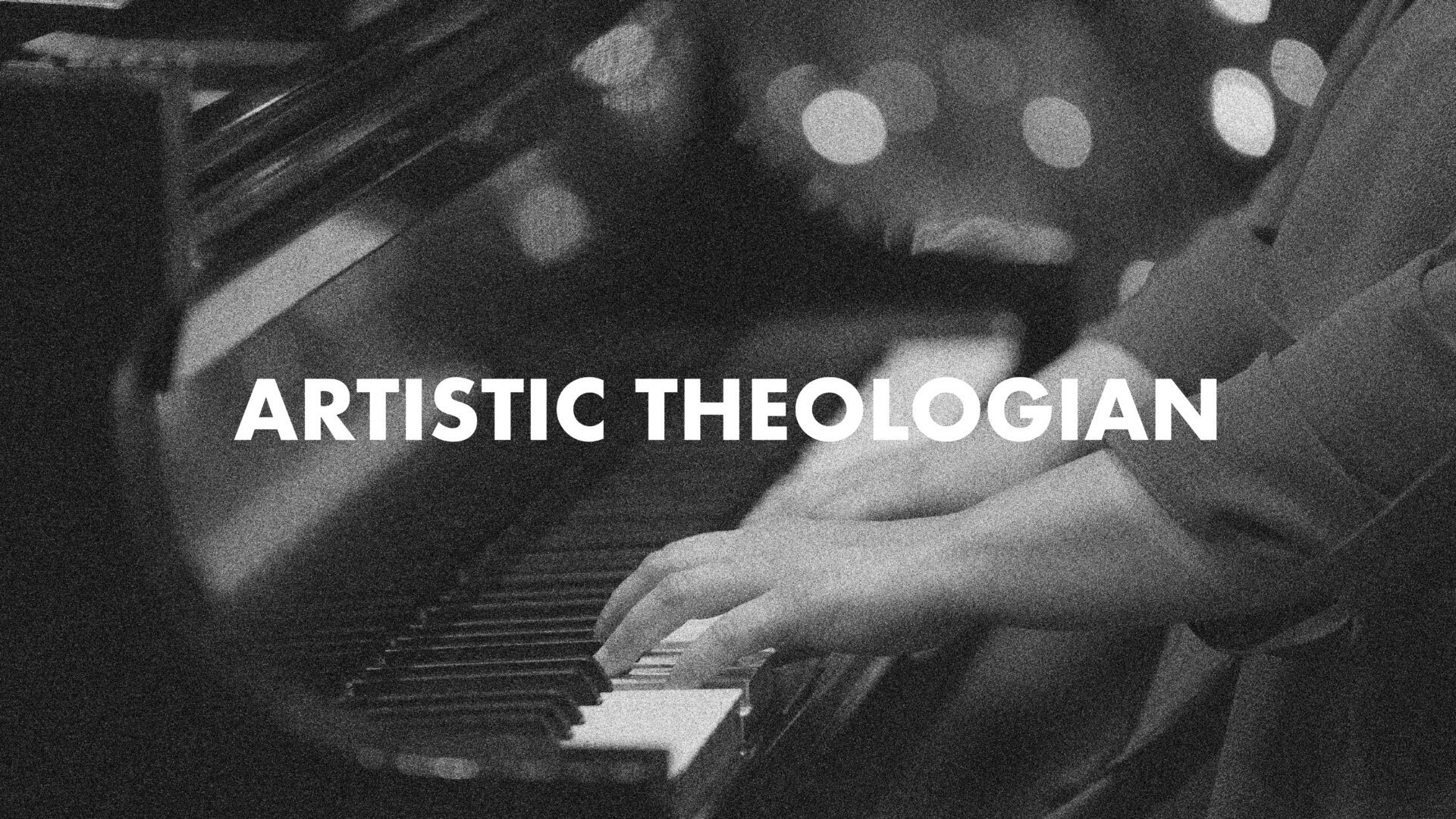
Cowden Hall’s Cornerstone Verse: Colossians 3:16
Artistic Theologian
Volume 12
Coming Summer 2025
Editor: Joshua A. Waggener
On the north side of Cowden Hall, the music building erected in 1926 on the campus of Southwestern Baptist Theological Seminary in Fort Worth, Texas, a verse from the apostle Paul’s letter to the Colossians is etched in the building’s cornerstone plaque: “Let the word of Christ dwell in you richly in all wisdom; teaching and admonishing one another in psalms and hymns and spiritual songs, singing with grace in your hearts to the Lord” (Col. 3:16, KJV). With this verse (along with its parallel in Ephesians 5:19), the New Testament church was called to the ministry of music, overflowing from the ministry of the Word, for the horizontal purposes of “teaching and admonishing one another” along with vertical expressions of “grace” (or “giving thanks,” CSB) to the Lord. The prescribed music was to be “psalms, hymns, and spiritual songs.”
Throughout the centuries of the church, Christians have sought to follow this apostolic command, singing genres of sacred music that were variously known as “psalms,” “hymns,” and “songs.” The early church practiced the singing of biblical psalms, all 150 of which were eventually incorporated into western monastic liturgy and sung to “Gregorian chant,” a style of music named after Pope Gregory the Great (ca. 540–604). Meanwhile, as the era of the church fathers came to an end, Bishop Ambrose of Milan (ca. 339–397) gave the western church Latin hymns affirming the divinity of Christ and Trinitarian doctrine to counter the heretical songs of the Arians.
Later, the singing of hymns and psalms played a key role in the Protestant Reformation. Crucial to Martin Luther’s (1483–1546) efforts were the German hymns (or “chorales”) “so that God’s Word and Christian teaching might be instilled and implanted in many ways” (Wittenberg Hymnal, 1524). And although Protestant congregations in England first sang metrical psalms, the arguments of Benjamin Keach (1640–1704) eventually convinced some Baptists (and soon others) to sing “hymns,” following the example of Jesus and his disciples after the Last Supper (Matt. 26:30, Mark 14:26). Congregationalist Isaac Watts (1674–1748) then supplied English hymns in finer poetic form, publishing collections of Hymns and Spiritual Songs (1707) as well as his Psalms of David Imitated in the Language of the New Testament (1719). Watts argued that, as hymns were our response to God in worship, those “of humane [human] composure” were suitable for worship, alongside versions of the psalms.1
The psalms, hymns, and spiritual songs of Watts were increasingly sung on American soil, spread by the evangelical fervor of the First Great Awakening. Another generation embraced the hymns of Charles Welsey (1707–88), compiled and edited by his brother John (1703–91) in hymnals such as A Collection of Hymns for the Use of the People called Methodists (1780). After the Second Great Awakening, American hymn writers such as William Bradbury (1816–68), Robert Lowry (1826–99), and William Doane (1832–1915) created the “Gospel song” genre, publishing hundreds of “Sunday School songs,” many of which became standards of evangelical hymnody in the twentieth century. Along with these were Ira Sankey’s (1840–1908) collections of Gospel Hymns and Sacred Songs. As this sketch of the history of church music indicates, many individuals contributed to the church’s heritage of singing psalms, hymns, and songs in its first nineteen hundred years.
Each person mentioned above is commemorated in stone on the campus of Southwestern Seminary. Along with biblical musicians, their names are etched around the top of Cowden Hall. The names begin with Jubal, proceed through biblical history with musicians from the Old and New Testaments (including Moses, Miriam, and David, along with “Zacharias” and Simeon), and then continue through nineteen centuries of sacred song. There are thirty-one names in total, including church fathers, liturgists, hymn writers, composers, and a famous music theorist.
With this issue of the Artistic Theologian, we begin a series of articles on these important figures. Here you will find five articles on three biblical musicians (Jubal, Asaph, and Heman) along with three key musical innovators from church history (Guido d’Arezzo, J. S. Bach, and Isaac Watts). Over the next few issues, the series will continue, with the goal of addressing all thirty-one of the musicians named on Cowden Hall.
Each article in the series seeks to address questions such as: How did this figure contribute to the practice of and/or an approach towards church music? What contributions are evident in the Baptist tradition? How might their contributions model an approach to music today, both in the church’s worship and for Christian engagement with culture?
This issue begins with an article by Dan Darling on Jubal, the first named figure on Cowden Hall. Although information about Jubal is limited to one verse in the Bible (Gen. 4:21), we find that Jubal—“the first of all who play the lyre and the flute”—is listed along with his brother Jabal—“the first of the nomadic herdsmen”—and his half-brother Tubal-cain—“who made all kinds of bronze and iron tools” (Gen. 4:20–22, CSB). Darling sees these three together as fulfilling the God-given cultural mandate of Genesis 1:26–28, despite their lineage through the rebellious line of Cain. The significance of this for today has both hopeful and sobering implications.
Next, Joshua Williams examines the musical contributions of two more biblical figures, Asaph and Heman, the fifth and sixth figures named on Cowden Hall. Based on details from 1 and 2 Chronicles, as well as other Old Testament literature, Asaph and Heman are found to play multiple roles central to Israel’s worship in the reigns of David and Solomon. Along with Jeduthun, these Old Testament musicians provide innovative leadership that impacts worship practices for generations and give examples that the contemporary church would be wise to emulate.
Moving into church history, Nathan Burggraff introduces Guido d’Arezzo, a Benedictine monk and musical innovator who served in the cathedral of Arezzo, Italy, around AD 1000. Guido, whose name is thirteenth in line around Cowden Hall, is the only figure who is primarily known as a music theorist. Based on Guido’s musical writings, Burggraff identifies the contributions that Guido made to both music theory and practice, including improvements in staff notation and the origins of the famous syllables used for sight singing: do, re, mi, fa, sol, la, and ti. Meanwhile, he finds that other inventions—such as the “Guidonian hand”—are attributed to Guido based only on his posthumous influence. The article closes with reflections on the continued importance of music theory for church musicians today.
Next, Ben Caston considers one of the most important composers (by any account) in the history of the church’s music: J. S. Bach (1685–1750), the eighteenth name on Cowden Hall. While his article reviews Bach’s musical life and mentions some of his most important works, Caston’s focus is more personal. He shares nine “lessons” that he has learned from Bach’s life and music—lessons learned during Caston’s career as a vocal soloist, choral conductor, and studio instructor. These lessons from Bach apply to all church musicians seeking to hone their musical skills and grow in their Christian faith.
Finally, David Music identifies “seeming contradictions” apparent in the life and work of Isaac Watts (1674–1748), the father of English hymnody and the twenty-first name on Cowden Hall. Despite Watts’s revolutionary approach to the church’s song, his debt to other innovators (including some Baptists) becomes evident. However, Watts did create “a new relationship between song and scriptural truth, demonstrating that they differed in their purpose but could nevertheless be closely linked.” Perhaps then, Watts realized, in his own way, the special relationship between singing and “the Word of Christ” that Paul spoke of in that cornerstone verse on Cowden Hall: Colossian 3:16.
As we look towards 2026, Southwestern Baptist Theological Seminary will celebrate 100 years of teaching the Word; singing psalms, hymns, and spiritual songs; and preparing ministers of music and worship in Cowden Hall. And, as we celebrate, we hope that the articles in the Cowden Hall 100 Years series will help readers appreciate the contributions of some biblical and historical musicians both for their own times as well as for music and worship ministries today.
Lastly, we welcome article submissions (preferably 4,000 to 6,000 words in length) and book reviews (800 to 900 words) for our next volume. The deadline for submission is October 1, 2025.
- See Isaac Watts, Essay towards the Improvement of Christian Psalmody, Or, An Enquiry How the Psalms of David Ought to Be Translated into Christian Songs, and How Lawful and Necessary It Is to Compose Other Hymns According to the Clearer Revelations of the Gospel, for the Use of the Christian Church (1707). ↩︎





